The 30 Most Controversial Casting Decisions in Movie History
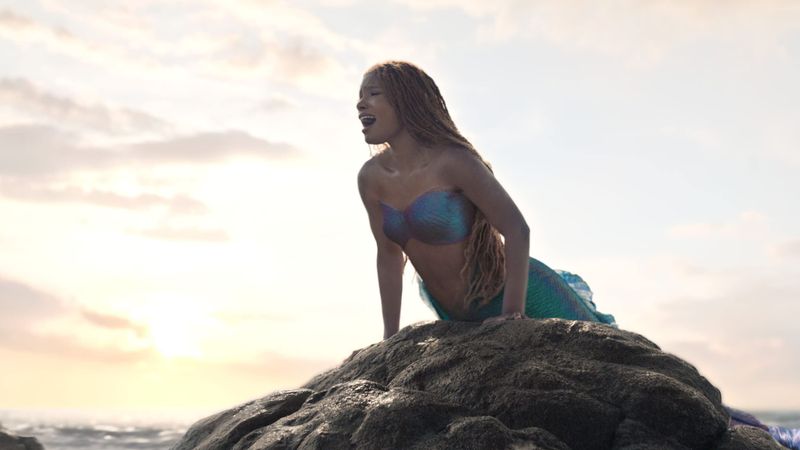
Hollywood has always loved a good debate, and few things spark more heated discussions than casting choices. When filmmakers announce who will play beloved characters or historical figures, fans often have strong opinions—sometimes positive, but just as often negative.
From accusations of whitewashing to concerns about physical appearance or acting ability, these 30 casting decisions created storms of controversy that dominated headlines and social media.
1. Johnny Depp as Grindelwald (Fantastic Beasts franchise)

Warner Bros. faced massive backlash when they kept Johnny Depp in the Fantastic Beasts sequel despite his very public legal troubles with ex-wife Amber Heard.
Fans split into two camps—those who believed in supporting Depp and those who thought his personal controversies made him unsuitable for a family franchise. The studio initially stood by their decision, citing legal presumptions of innocence.
However, after Depp lost a libel case in the UK, Warner Bros. asked him to resign from the role. Mads Mikkelsen eventually replaced him in the third film. The situation highlighted Hollywood’s struggle with separating artists from their personal lives.
The controversy damaged the franchise’s reputation and box office performance. Many fans boycotted the films entirely, while others argued that Depp deserved better treatment from the studio that had profited from his performances.
2. Scarlett Johansson as a Trans Man in Rub & Tug
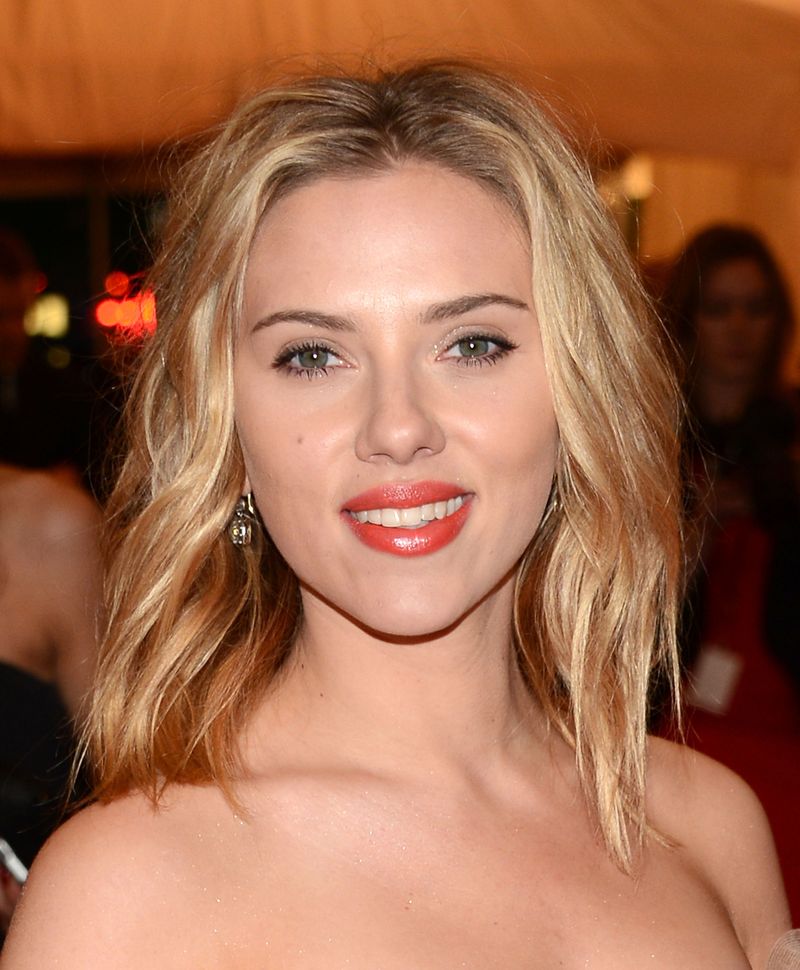
When Scarlett Johansson accepted the role of Dante “Tex” Gill, a real-life trans man who ran massage parlors in 1970s Pittsburgh, the announcement sparked immediate outrage.
LGBTQ+ advocates and trans actors argued that trans roles should go to trans performers, especially given how few opportunities exist for them in Hollywood. The criticism was swift and unrelenting across social media platforms.
Johansson initially defended her casting, suggesting critics could be appeased. This response only intensified the backlash, with many calling her tone-deaf and insensitive. Major LGBTQ+ organizations publicly condemned the decision.
Within days, Johansson withdrew from the project, issuing a statement acknowledging the concerns. The film was eventually shelved. This controversy became a turning point in Hollywood’s conversation about authentic representation and who gets to tell whose stories.
3. Scarlett Johansson in Ghost in the Shell

Paramount Pictures cast Scarlett Johansson as Major Motoko Kusanagi in the live-action adaptation of the beloved Japanese manga and anime. Critics immediately accused the studio of whitewashing, arguing that an Asian actress should have played this iconic Japanese character. The controversy dominated discussions leading up to the film’s release.
Johansson and the filmmakers defended the choice, claiming the character’s synthetic body made ethnicity irrelevant. This explanation satisfied almost no one. Asian-American actors and advocacy groups pointed out the pattern of Hollywood erasing Asian characters from stories rooted in Asian culture.
The film bombed at the box office, earning only $169 million worldwide against a $110 million budget. Many blamed the casting controversy for audiences staying away. Johansson later admitted she should have declined the role, acknowledging the valid concerns about representation in Hollywood.
4. Emma Stone in Aloha
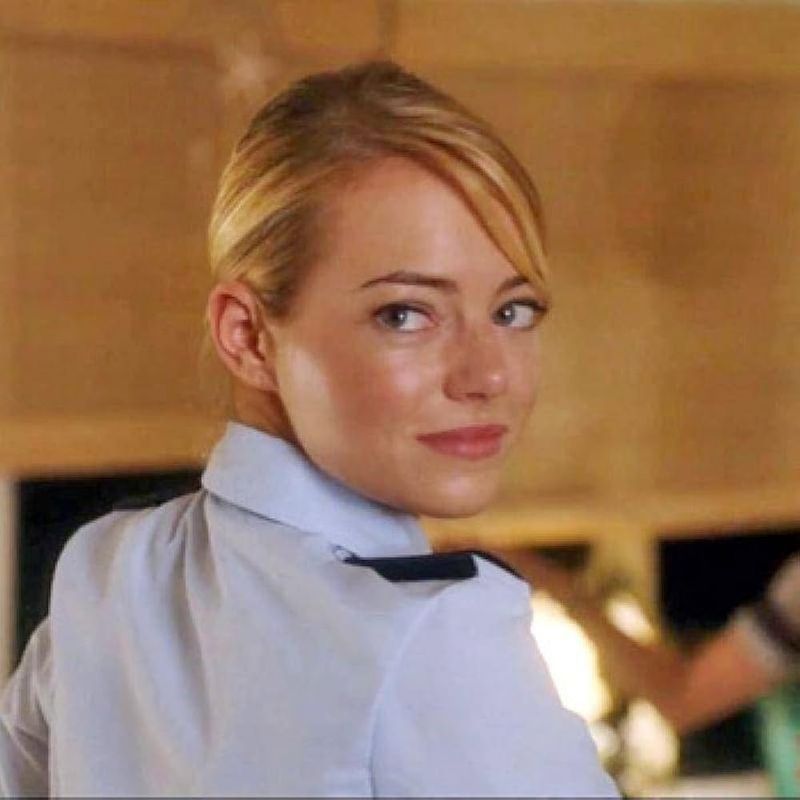
Cameron Crowe’s romantic comedy featured Emma Stone as Allison Ng, a character described in the script as one-quarter Hawaiian and one-quarter Chinese.
Stone, who is of Swedish and Scottish descent, faced immediate criticism for being cast in a role meant to represent mixed Asian and Pacific Islander heritage. The casting choice seemed particularly tone-deaf given the character’s name and cultural background.
Crowe later apologized, admitting he had cast the film poorly and expressing regret for not giving the role to someone who better matched the character’s ethnicity. Stone herself acknowledged the valid concerns. The controversy overshadowed the film’s release.
The movie received poor reviews and performed weakly at the box office, earning just $26 million worldwide. Critics cited the whitewashing as one of many problems with the film. This casting decision became a textbook example of Hollywood’s ongoing representation issues.
5. Ben Affleck as Batman

Warner Bros. broke the internet in 2013 when they announced Ben Affleck would play Batman in Batman v Superman: Dawn of Justice. Fans erupted with anger, creating petitions and flooding social media with complaints. Many remembered Affleck’s previous superhero failure in Daredevil and couldn’t imagine him as the Dark Knight.
The hashtag #NotMyBatman trended worldwide. Critics questioned whether Affleck had the gravitas and physicality for the role. Some even suggested the casting would ruin the entire DC Extended Universe before it began.
When the film finally released, most critics praised Affleck’s performance as one of the movie’s strengths. He brought a weathered, brutal interpretation to the character that many fans loved. The controversy proved once again that initial reactions don’t always predict final results, though Affleck eventually left the role after mixed receptions to subsequent films.
6. Michael Keaton as Batman (1989)
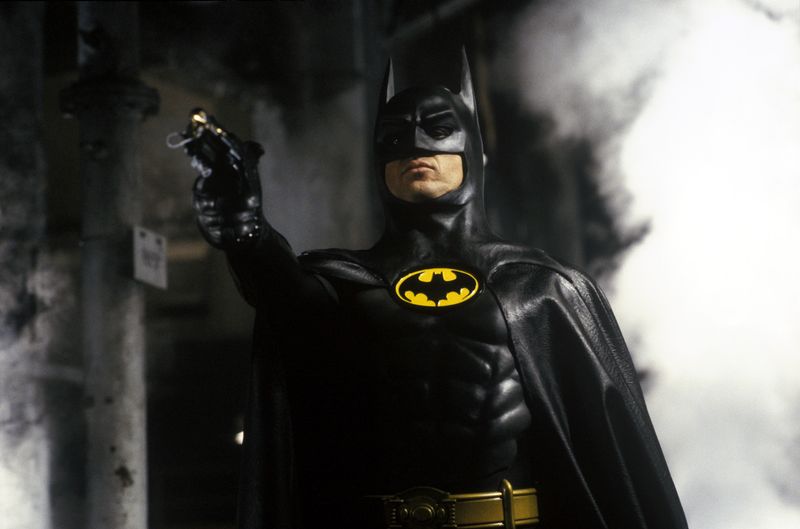
Tim Burton shocked the world when he cast Michael Keaton, known primarily for comedies like Beetlejuice and Mr. Mom, as Batman in his 1989 film. Fans were absolutely furious, sending Warner Bros. approximately 50,000 protest letters. How could a funny guy play the world’s greatest detective and Gotham’s brooding protector?
Newspapers ran articles about the controversy, and comic book stores displayed anti-Keaton sentiment. Many predicted the film would be a disaster. The backlash was so intense that it became a major news story beyond entertainment circles.
Then the movie came out, and Keaton silenced critics with a dark, intense performance that redefined Batman for a new generation. The film earned over $400 million worldwide and became a cultural phenomenon. Keaton proved that actors could surprise audiences when given the chance, establishing a precedent for trusting directors’ visions despite initial fan resistance.
7. Daniel Craig as James Bond
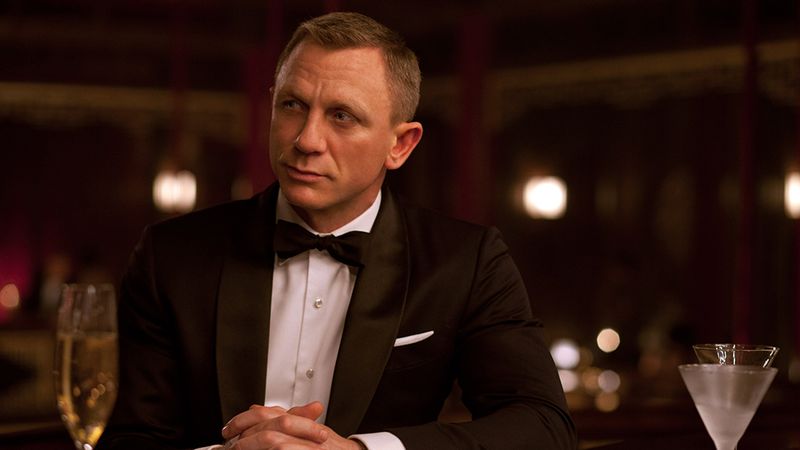
When Daniel Craig was announced as the sixth James Bond in 2005, fans revolted against the idea of a blonde 007. The website “craignotbond.com” launched to protest the casting. Critics complained he wasn’t handsome enough, wasn’t tall enough, and looked too rough around the edges for the sophisticated spy.
Tabloids mocked his appearance, and longtime Bond fans expressed outrage that producers had strayed from the dark-haired template. Some called him the worst casting choice in the franchise’s history. The negativity seemed overwhelming before Casino Royale even began filming.
Craig’s debut silenced doubters immediately, earning critical acclaim and box office success. His grittier, more emotional take on Bond revitalized the franchise. He went on to become one of the most beloved Bonds, starring in five films over fifteen years. The controversy became a cautionary tale about judging actors before seeing them perform.
8. Heath Ledger as The Joker
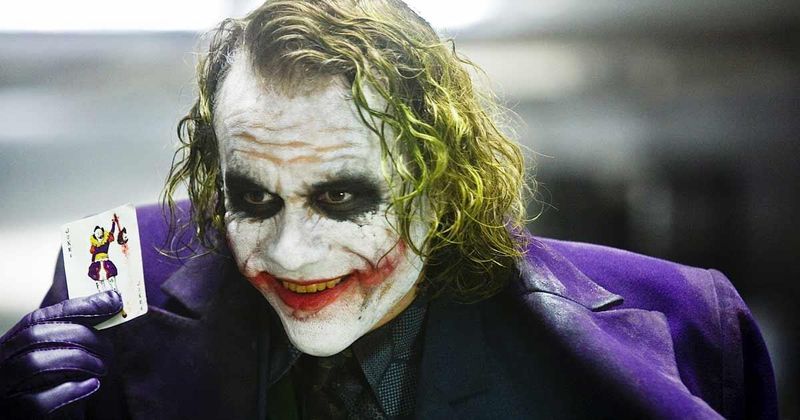
Christopher Nolan’s decision to cast Heath Ledger as the Joker in The Dark Knight triggered one of Hollywood’s most infamous casting controversies. Fans who loved Jack Nicholson’s interpretation couldn’t imagine the pretty boy from 10 Things I Hate About You and Brokeback Mountain as Batman’s greatest nemesis. Online forums exploded with negativity.
Critics called Ledger too young, too handsome, and too lightweight for such an iconic villain. Many predicted the film would fail because of this single casting choice. The backlash was relentless and deeply personal.
Ledger’s performance became legendary, earning him a posthumous Oscar and redefining what comic book villains could be. His haunting, anarchic Joker terrified and mesmerized audiences.
Tragically, Ledger died before the film’s release, never knowing how completely he had won over his harshest critics. The controversy remains the ultimate example of fans being spectacularly wrong about casting.
9. Tom Cruise as Jack Reacher

Lee Child’s Jack Reacher novels describe the protagonist as 6’5″ tall, weighing around 250 pounds of pure muscle—an intimidating physical specimen. When Paramount cast Tom Cruise, who stands 5’7″, fans of the book series went ballistic. The height difference became a symbol of Hollywood’s disrespect for source material.
Readers felt Cruise’s star power had overridden the character’s essential physical traits. Social media filled with jokes and angry complaints. Many vowed to boycott the film entirely, arguing that Reacher’s imposing size was crucial to how the character operates in the stories.
Author Lee Child defended the casting, praising Cruise’s intensity and work ethic. The first film performed decently at the box office, though it never won over hardcore book fans. Cruise made a sequel, but Amazon eventually rebooted the franchise with 6’2″ Alan Ritchson in the role, finally giving fans the physically accurate Reacher they’d always wanted.
10. Jennifer Lawrence as Katniss Everdeen

Hunger Games fans had strong opinions about who should play Katniss Everdeen when Lionsgate announced Jennifer Lawrence for the role. Book readers pointed out that Katniss was described as having dark hair, olive skin, and a petite frame, while Lawrence was blonde, fair-skinned, and curvier. The physical differences sparked heated debates online.
Some fans also worried Lawrence was too old at 20, as Katniss begins the series at 16. Others questioned whether she could capture the character’s hardscrabble background and survival instincts. The controversy divided the passionate fanbase.
Lawrence’s performance won over most critics and audiences, earning her an Oscar nomination for the first film. She dyed her hair dark and brought emotional depth to Katniss. The franchise became a massive success, earning nearly $3 billion worldwide. While some book purists never fully accepted the casting, Lawrence’s portrayal became definitive for most fans.
11. Christian Bale as Moses in Exodus: Gods and Kings
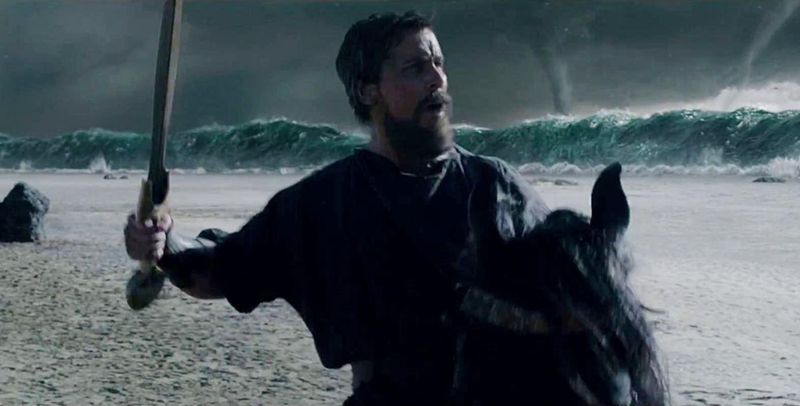
Ridley Scott’s biblical epic cast Christian Bale, a white British actor, as Moses, alongside other white actors playing Egyptian and Hebrew characters. The whitewashing controversy exploded immediately, with critics pointing out the absurdity of casting Europeans as Middle Eastern historical figures. Religious groups and cultural advocates condemned the decision.
Scott defended the casting by claiming he needed movie stars to secure financing, essentially admitting that box office concerns trumped historical accuracy. This explanation only intensified criticism. The film was banned in Egypt and Morocco for historical inaccuracies.
Exodus: Gods and Kings flopped at the box office, earning $268 million against a $140 million budget. Critics savaged both the whitewashing and the film itself. The controversy contributed to growing pressure on Hollywood to cast more authentically, especially for historical and cultural stories rooted in non-white civilizations.
12. Rooney Mara as Tiger Lily (Pan)
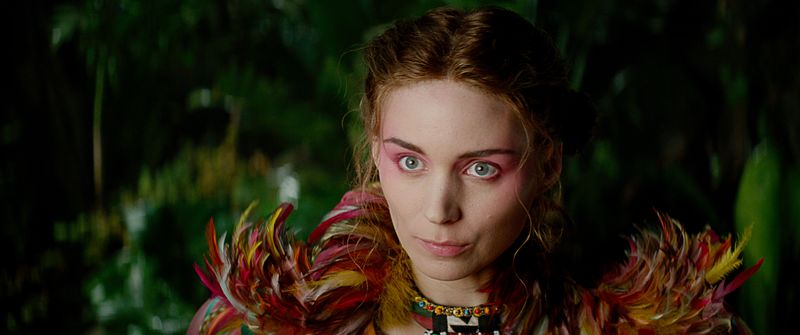
Warner Bros. faced fierce backlash when they cast Rooney Mara, a white actress, as Tiger Lily in their Peter Pan prequel. Tiger Lily is traditionally depicted as a Native American character, making this casting choice particularly problematic. Native American actors and advocacy groups protested loudly, pointing out Hollywood’s long history of erasing indigenous representation.
The studio’s decision seemed especially tone-deaf given ongoing conversations about diversity and the limited opportunities for Native actors. Mara herself later expressed regret about accepting the role. The controversy overshadowed the film’s marketing campaign.
Pan bombed spectacularly, losing Warner Bros. an estimated $150 million. While the whitewashing wasn’t the only problem—the film received terrible reviews overall—it certainly didn’t help. The failure sent a message to studios that audiences increasingly care about authentic representation and won’t automatically support films that ignore these concerns.
13. Tilda Swinton as The Ancient One (Doctor Strange)

Marvel Studios created controversy by casting Tilda Swinton, a white British actress, as the Ancient One in Doctor Strange. In the comics, the character is an elderly Asian man from Tibet. The decision to change both the character’s race and gender sparked accusations of whitewashing and erasure of Asian representation.
Director Scott Derrickson and writer C. Robert Cargill explained they wanted to avoid the “Dragon Lady” stereotype and sidestep Chinese censorship issues regarding Tibet. These explanations satisfied few critics. Asian-American actors and advocates argued that Marvel could have cast an Asian actor and simply written the character differently.
The controversy highlighted Hollywood’s tendency to find excuses for not casting Asian actors, even when adapting stories rooted in Asian culture. Swinton’s performance received praise, but the casting remained problematic. Marvel later acknowledged the mistake, with producer Kevin Feige admitting they should have handled the situation better and cast more thoughtfully.
14. Jared Leto as The Joker (Suicide Squad)
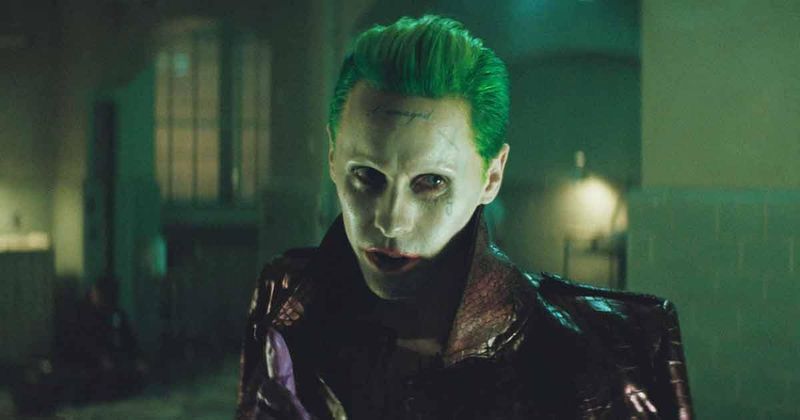
Warner Bros. hyped Jared Leto’s Joker as the centerpiece of Suicide Squad, but fans were skeptical from the first promotional images. The tattooed, grill-wearing interpretation looked radically different from previous versions. Stories about Leto’s method acting—sending cast members dead rats and used condoms—made many uncomfortable rather than impressed.
As more details emerged about his on-set behavior, the backlash intensified. Many questioned whether his actions constituted dedication or simply unprofessional harassment. The marketing focused heavily on the Joker despite his limited screen time.
When the film released, Leto’s performance disappointed most viewers, and much of his footage had been cut. Fans felt cheated by the marketing campaign. Leto himself expressed frustration about the cuts. The character was essentially written out of future DC films, and the controversy around his casting and behavior became a cautionary tale about method acting gone wrong.
15. Halle Bailey as Ariel (The Little Mermaid)

Disney’s announcement that Halle Bailey would play Ariel in the live-action Little Mermaid remake triggered a racist backlash that revealed ugly truths about online culture. Critics complained that Ariel was “supposed to be white,” ignoring that she’s a fictional mermaid. The hashtag #NotMyAriel trended alongside disturbing racist comments.
Supporters rallied around Bailey, pointing out that representation matters and that children of color deserve to see themselves as Disney princesses. Videos of young Black girls crying with joy at seeing a Black Ariel went viral, countering the negativity. Many noted the hypocrisy of complaining about realism regarding a fantasy creature.
Bailey handled the controversy with grace and dignity. When the film released in 2023, her performance earned widespread praise, and the movie grossed over $569 million worldwide. Young audiences of all backgrounds embraced her as Ariel, proving that talent and heart matter more than matching previous depictions.
16. Jake Gyllenhaal in Prince of Persia

Disney cast Jake Gyllenhaal as the lead in Prince of Persia: The Sands of Time, a film based on a video game set in medieval Persia. Critics immediately pointed out the obvious whitewashing of a story rooted in Persian culture. Middle Eastern actors and advocates questioned why Hollywood couldn’t cast authentically for a big-budget adventure film.
The studio defended Gyllenhaal’s casting by emphasizing his star power and box office appeal. This reasoning ignored the circular problem—Middle Eastern actors can’t become stars if they’re never given starring roles. The controversy highlighted systemic issues in Hollywood’s casting practices.
Despite the big budget and Gyllenhaal’s efforts, the film underperformed, earning $336 million against a $200 million production budget. Reviews were mixed, with many critics citing the whitewashing as emblematic of the film’s broader problems. The failure demonstrated that star power alone couldn’t overcome poor creative choices and cultural insensitivity.
17. Kristen Stewart as Princess Diana (Spencer)

When Pablo Larraín announced Kristen Stewart would play Princess Diana in Spencer, many people scratched their heads. Stewart, best known for Twilight and her American accent, seemed like an odd choice for British royalty. Critics questioned whether she had the range and gravitas to portray one of the world’s most photographed women.
The skepticism was widespread across social media and entertainment media. Some British observers felt particularly protective of Diana’s legacy. Stewart’s previous work hadn’t demonstrated the classical acting chops many felt the role required.
Then the film premiered, and Stewart delivered a haunting, vulnerable performance that earned her an Oscar nomination.
Critics praised her ability to capture Diana’s fragility and strength. She mastered the accent and physicality, silencing doubters. The casting controversy transformed into a triumph, proving once again that actors can surprise us when working with visionary directors who see potential others miss.
18. Jamie Dornan as Christian Grey (Fifty Shades of Grey)

Fifty Shades of Grey fans had very specific ideas about who should play Christian Grey when the book series became a film franchise. When Universal cast Jamie Dornan, fans launched petitions demanding different actors. Over 90,000 people signed petitions wanting Matt Bomer, Ian Somerhalder, or other actors in the role instead.
Readers felt Dornan didn’t match their mental image of the billionaire character. The backlash was intense and personal, with fans analyzing his every feature and comparing him unfavorably to their preferred choices. The controversy dominated entertainment news for weeks.
The film became a massive box office success despite mixed reviews, earning $571 million worldwide. However, chemistry issues between Dornan and co-star Dakota Johnson plagued the franchise. Dornan himself seemed uncomfortable in the role throughout three films. While the controversy didn’t hurt the box office, it did highlight the challenges of adapting beloved books with passionate fanbases.
19. Anne Hathaway as Fantine (Les Misérables)
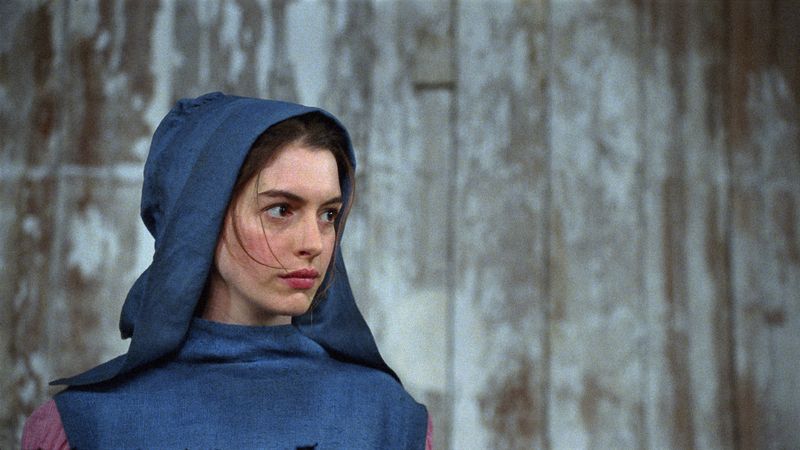
Tom Hooper’s casting of Anne Hathaway as Fantine in Les Misérables initially drew skepticism from musical theater fans. Many felt she was too polished and glamorous to play the desperate, dying factory worker and prostitute. Some wanted a less famous actress who could disappear into the role. Online discussions questioned her suitability.
Hathaway faced additional criticism for being “too Hollywood” for the gritty role. Musical purists worried she couldn’t capture Fantine’s tragedy and desperation. The negativity followed her through production and early marketing.
Then audiences saw her perform “I Dreamed a Dream” in one devastating take, and all criticism evaporated. Hathaway’s raw, emotional performance earned her an Academy Award for Best Supporting Actress.
She lost 25 pounds and cut her hair on camera, fully committing to the role. The controversy became another example of fans judging prematurely and actors proving their worth through dedication and talent.
20. Russell Crowe as Javert (Les Misérables)
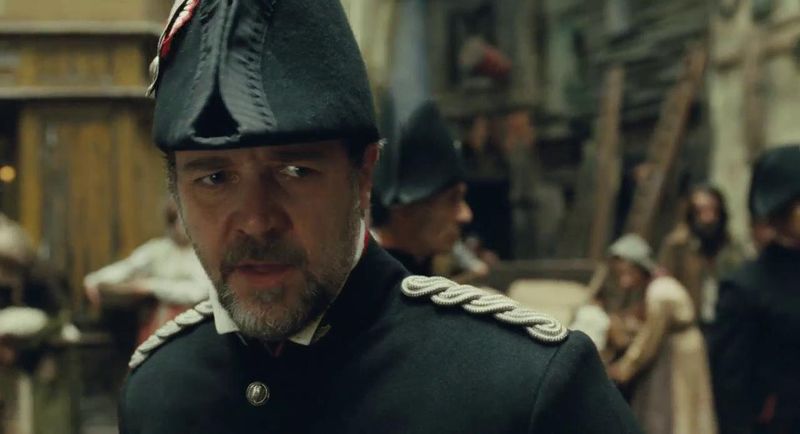
Musical theater enthusiasts were horrified when Russell Crowe was cast as Inspector Javert in Les Misérables. Crowe had never been known for singing, and Javert’s role requires serious vocal power for songs like “Stars” and “Javert’s Suicide.” Fans worried he would ruin the musical numbers and drag down the entire production.
Concerns intensified when early clips revealed Crowe’s limited vocal range and flat delivery. Critics and audiences alike cringed at his singing. Social media exploded with jokes and complaints about his performance. The criticism was harsh and widespread.
While the film succeeded overall and won multiple Oscars, Crowe’s singing remained its weakest element.
Even Crowe acknowledged he wasn’t a trained singer. The controversy highlighted the challenge of casting movie musicals—balancing star power with actual musical ability. Many felt the role should have gone to a Broadway performer who could have done justice to Javert’s powerful songs.
21. Gal Gadot as Wonder Woman
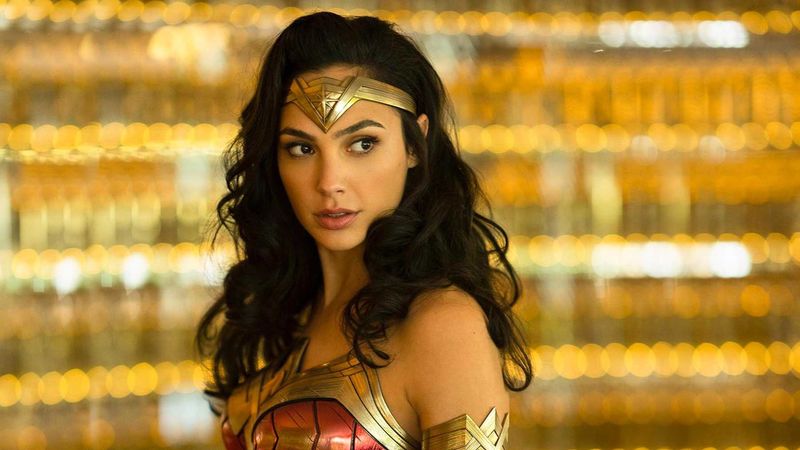
When Warner Bros. announced Gal Gadot would play Wonder Woman in Batman v Superman, fans immediately criticized her physique. Comic book readers argued she was too thin and not muscular enough for an Amazonian warrior princess. Online forums filled with complaints that she didn’t have the curves or physical presence the character required.
Critics compared her unfavorably to comic book depictions of Wonder Woman’s powerful build. Some questioned her acting experience, as she was primarily known for supporting roles in the Fast & Furious franchise. The negativity was surprisingly intense for such an iconic casting.
Gadot silenced critics with her charismatic, powerful performance that became the highlight of Batman v Superman. Her solo film Wonder Woman became a cultural phenomenon, earning $822 million and universal praise.
She trained extensively and brought grace, strength, and heart to the character. The controversy evaporated as audiences embraced her definitive portrayal of the DC icon.
22. Marlon Brando in The Teahouse of the August Moon

Marlon Brando’s performance as Sakini, an Okinawan interpreter, in the 1956 film The Teahouse of the August Moon represents one of Hollywood’s most egregious examples of yellowface.
Brando wore makeup to appear Asian, adopted a stereotypical accent, and played a character that should have gone to an Asian actor. The practice was common in 1950s Hollywood but remains deeply offensive.
At the time, few mainstream critics questioned the casting, though Asian-American communities certainly noticed and objected. Hollywood’s casual racism in casting Asian roles with white actors was standard practice. The film was considered a comedy, making the racial caricature even more problematic.
Looking back, the casting is indefensible and embarrassing. It exemplifies the systemic exclusion of Asian actors from Hollywood and the acceptability of racial stereotyping in entertainment. The film serves as a historical reminder of how far representation has come, though many argue Hollywood still has considerable progress to make regarding authentic Asian representation.
23. Mickey Rooney in Breakfast at Tiffany’s
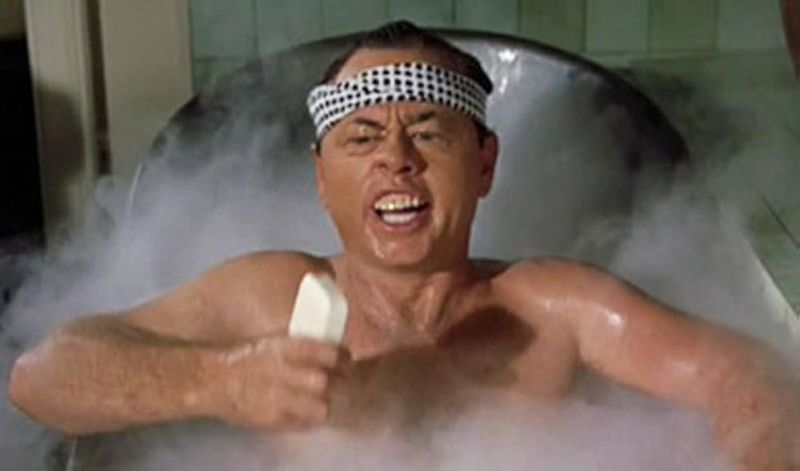
Mickey Rooney’s portrayal of Mr. Yunioshi in Breakfast at Tiffany’s remains one of cinema’s most notorious examples of racist yellowface. Rooney wore prosthetic teeth, squinted his eyes, and performed an offensive caricature of a Japanese man that relied on every harmful stereotype imaginable. The performance is painful to watch and mars an otherwise beloved film.
Even in 1961, some critics recognized the portrayal as problematic, though mainstream audiences largely accepted it. Asian-American viewers found it deeply hurtful and demeaning. The role reduced an entire culture to a racist joke for white audiences’ entertainment.
Rooney later apologized for the role, admitting he wished he hadn’t done it. The performance has been widely condemned by film historians and cultural critics. Modern screenings often come with content warnings. The controversy serves as a stark reminder of Hollywood’s racist past and the real harm caused by such portrayals to Asian communities seeking dignity and representation.
24. Robert Downey Jr. in Tropic Thunder
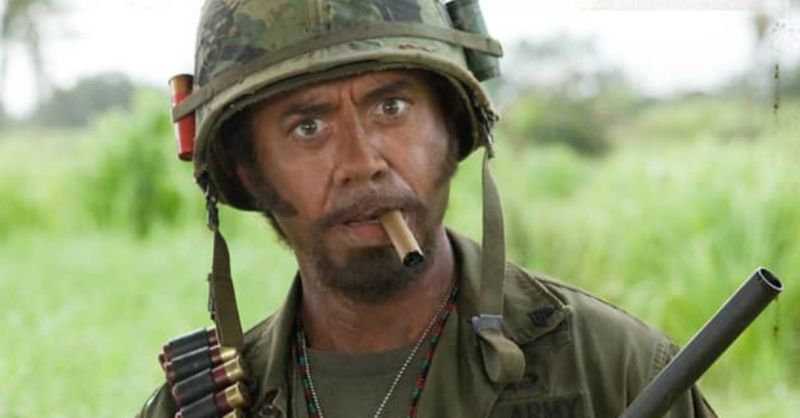
Robert Downey Jr. played Kirk Lazarus, an Australian method actor who undergoes skin pigmentation surgery to play a Black soldier in Tropic Thunder. The 2008 comedy intentionally satirized Hollywood’s racial insensitivity and actors’ absurd commitment to roles. However, the use of blackface—even satirical—sparked immediate controversy and continues to generate debate.
Some critics argued the satire was smart and effectively mocked Hollywood racism rather than perpetuating it. Others felt blackface is never acceptable regardless of context or intent. The controversy intensified during the 2020 racial reckoning, with some calling for the film to be removed from streaming platforms.
Downey Jr. defended the performance as clearly satirical, and the character was written to be ridiculous.
Co-star Brandon T. Jackson played a Black actor who constantly calls out Lazarus’s offensiveness within the film itself. The controversy remains unresolved, with valid arguments on both sides about whether satire justifies the imagery and whether audiences understand the intended critique.
25. Zendaya as MJ in Spider-Man
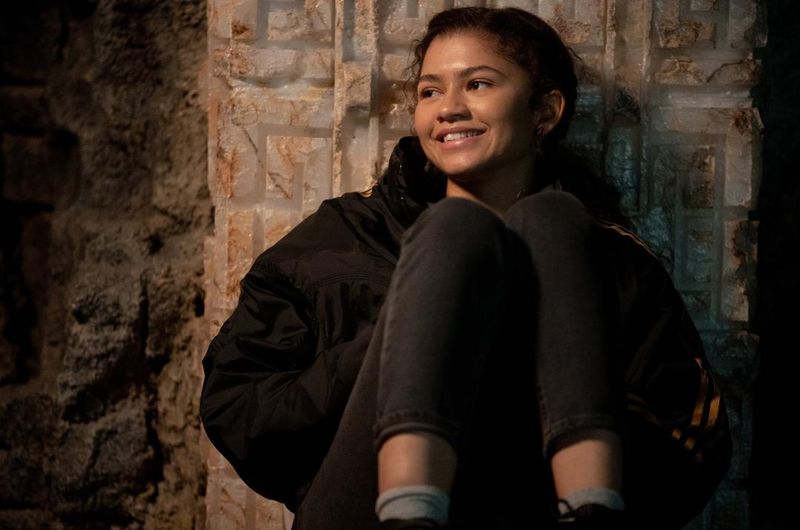
Marvel Studios faced backlash from some fans when Zendaya was cast as Michelle “MJ” Jones in Spider-Man: Homecoming. Traditional Spider-Man fans expected Mary Jane Watson, a white redhead who’s been Peter Parker’s love interest since the 1960s comics. The reveal that Zendaya’s character used the initials “MJ” sparked accusations of race-swapping.
Critics of the casting argued Marvel was erasing an iconic character to push diversity. Some fans claimed they weren’t racist but simply wanted comic accuracy. The controversy revealed tensions between traditional fans and Marvel’s efforts to modernize and diversify its characters.
Zendaya’s performance won over most viewers, and her chemistry with Tom Holland became a franchise highlight. Her character was technically different from Mary Jane Watson, though clearly inspired by her. The Spider-Man films became massive successes, and Zendaya’s MJ became beloved by a new generation. The controversy faded as audiences embraced her unique take on the character.
26. Brie Larson as Captain Marvel

Brie Larson’s casting as Captain Marvel attracted controversy that had less to do with her acting ability and more to do with sexist backlash against her advocacy for diversity. Before the film’s release, Larson made comments about wanting more inclusion of women and people of color in film criticism. Some male fans interpreted this as an attack.
A coordinated campaign attempted to tank the film’s Rotten Tomatoes audience score before anyone had seen it. Critics accused Larson of being “too serious,” not smiling enough, and being unlikable. The backlash revealed deeper issues about women in superhero films and female characters who don’t prioritize being pleasant.
Captain Marvel earned over $1.1 billion worldwide, becoming one of Marvel’s biggest hits. Larson’s performance was solid, though the controversy overshadowed legitimate discussions about the film’s quality. The situation highlighted how female actors face different standards and scrutiny than their male counterparts, especially in traditionally male-dominated genres like superhero films.
27. Nicolas Cage as Superman in Tim Burton’s never-made Superman Lives

In the late 1990s, Tim Burton planned to direct Superman Lives starring Nicolas Cage as the Man of Steel. When test photos leaked showing Cage in costume with long hair, fans absolutely lost their minds. The idea of the eccentric Cage playing the wholesome, all-American Superman seemed completely absurd to most comic book readers.
The backlash was intense and relentless. Fans created early internet petitions demanding the project be canceled. Photos of Cage in various costume designs—including some truly bizarre ones—only fueled the fire. The controversy became legendary in pre-production Hollywood disasters.
The film was eventually canceled due to budget concerns and creative differences, not fan backlash. However, the controversy lives on as one of Hollywood’s great “what if” stories.
A documentary called The Death of Superman Lives explored what the film might have been. We’ll never know if Cage could have surprised critics like other controversial castings, but the internet certainly wasn’t willing to give him a chance.
28. Jesse Eisenberg as Lex Luthor
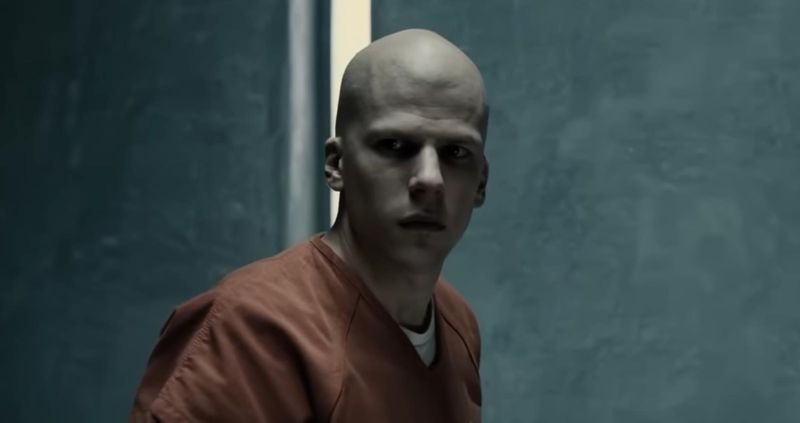
Warner Bros. shocked fans by casting Jesse Eisenberg as Lex Luthor in Batman v Superman: Dawn of Justice. Luthor is traditionally portrayed as an older, imposing businessman—basically evil corporate power personified. Eisenberg, known for playing nervous, fast-talking characters, seemed completely wrong for Superman’s greatest enemy. The announcement triggered immediate skepticism.
Fans worried Eisenberg would simply replay his Mark Zuckerberg from The Social Network. Many wanted an older, more physically intimidating actor who could match Superman’s presence. The casting felt like a gimmick rather than a serious character choice.
When the film released, Eisenberg’s manic, quirky interpretation divided audiences. Some found it interesting and different, but most critics and fans hated it. His Luthor was twitchy, over-the-top, and more annoying than menacing.
The performance is widely considered one of the film’s biggest missteps. The casting controversy was justified—Eisenberg’s Luthor never worked, and the character hasn’t returned in subsequent DC films.
29. Keanu Reeves as Jonathan Harker (Bram Stoker’s Dracula)
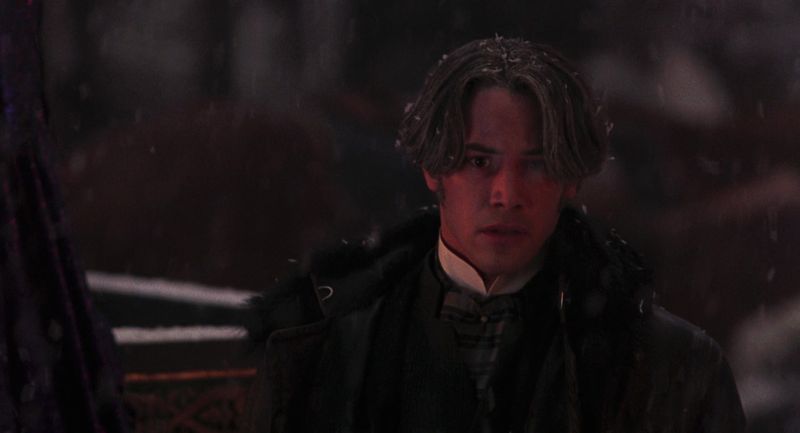
Francis Ford Coppola cast Keanu Reeves as Jonathan Harker in his lavish 1992 adaptation of Dracula, surrounding him with theatrical heavyweights like Gary Oldman, Anthony Hopkins, and Winona Ryder. Reeves was coming off Point Break and Bill & Ted, and his acting style clashed dramatically with the film’s gothic, operatic tone.
Critics immediately panned his British accent as one of cinema’s worst. Reeves seemed lost among the more experienced theatrical actors. His performance felt flat and unconvincing, making viewers question why Coppola chose him for such a prestigious production.
The miscasting became legendary, with Reeves himself later joking about his terrible accent. While the film succeeded overall thanks to its visual style and Oldman’s performance, Reeves remains its weakest link. The controversy highlighted the importance of matching actors to appropriate material and the dangers of casting based on rising star power rather than suitability for specific roles.
30. Cameron Diaz as Miss Hannigan (Annie remake)

Will Gluck’s 2014 Annie remake cast Cameron Diaz as Miss Hannigan, the cruel orphanage director. The casting surprised many because Diaz, known for comedies and romantic leads, seemed like an odd fit for the musical villain role. Fans of the original Broadway show and 1982 film version had strong opinions about who should play the iconic drunk, bitter character.
When trailers revealed Diaz’s over-the-top performance and questionable singing, the backlash intensified. Critics felt she was trying too hard and missing the character’s dark humor. The performance looked more cartoonish than menacing or funny.
The film received poor reviews and underperformed at the box office. Diaz’s performance was frequently cited as one of its major problems. Many felt a more experienced musical theater performer could have brought depth and humor to the role.
The controversy contributed to the film’s failure and became another example of Hollywood miscasting in musical adaptations. Diaz retired from acting shortly after, making this one of her final roles.

Comments
Loading…